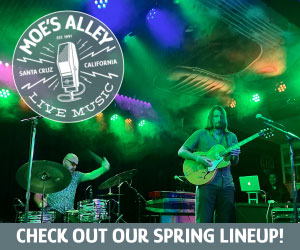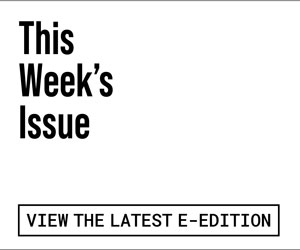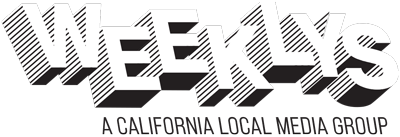 How endorsements happen, and why the Good Times is relieved to stay out of it, for now
How endorsements happen, and why the Good Times is relieved to stay out of it, for now
Like most newspapers that take themselves seriously, we spend a little time interviewing as many candidates in as many races as we can every time an election rears its head over the horizon like Vladimir Putin on a metaphysical Alaskan invasion. This year, we have been blessed and cursed with four elections. We’d complain, but we know that Gail Pellerin, the county’s hard-working clerk, goes through trials that put ours to shame. Regardless, after each of these interviews, just about every candidate asks the same question just as the conversation is ending, “Do you endorse?”
No, we don’t. Why not? The answer might change depending on whom you talk to, because there’s not exactly a plaque on the entryway door engraved with the words “thou shalt not endorse here.” It’s a tradition, to be sure, for GT to stay out of the hustle and research involved in making intelligent endorsements to the electorate, but is it borne of laziness or principle? Weakness or strength?
According to Greg Archer, the editor of this paper for more than seven years, “The tradition at the Good Times has been to present the readers with all the material, facts, and information they need to know in a fair way, so they have an opportunity to absorb everything. The tradition has not been to spoonfeed readers our opinions.”
So are newspaper endorsements a condescending act? Not necessarily, he says. “I look to newspapers I respect when I’m voting, to see who they endorse. I look at the Mercury-News, the Chronicle, the New York Times. Not that I necessarily do what they say, but it’s interesting. For instance, the Examiner endorsed McCain. That gave me a different view of the Examiner.”
Archer admits that when he and publisher Ron Slack took over the Good Times, it was not in as strong a place in the community, which may have led to the lack of endorsements. Now that some of the prestige and trust have returned—don’t worry, we’ll put down this tooting horn in a second—he says it might be time to reconsider. “I don’t know if there’s a right or wrong answer,” he says. “It depends on the media outlet and what its effect is on the community. If readers in this community want us to endorse, we’re open to exploring that possibility.”
No doubt about it, endorsements are hard work, when taken seriously. What GT wondered was how seriously various organizations do take the process, and how many people’s input goes into each endorsement. Naturally, we started with our own industry, since—perceived partisanship or not—newspapers are the only endorsing organization that does not exclude candidates based on party, that does not query them on the basis of one issue, and that has the most opportunity to disseminate its decisions.
The Media
Don Miller, who’s going through his first big election season as the editor of the Santa Cruz Sentinel, is much like Archer in that he is reconsidering his paper’s tradition of endorsement. “Right now it’s just three people,” he says of the paper’s editorial board, “but we’ll probably expand the board and maybe get some community members involved.” He says the board included the community in the past, and it might be a good time to increase the size of the board, given the paper’s recent decrease in editorial resources overall.
“Unless we are able to meet people and attend forums, we’re at the stage where we don’t do things like school boards, fire boards, etc., especially on a crowded ballot,” he says. “There’s no way with our resources that we can get out and get first-hand knowledge and study the issues ourselves to make informed decisions. Election season is so crazy at a daily anyway because every candidate in the world wants their say and their personal interview.”
However, Miller believes the place of a daily is too important to skip the process, no matter how much grief it might save. “We’ve discussed over the years not doing it, but it’s stepping out of our role in the community,” he says. “We endorsed Obama, and I’ve had probably had 15 people blast me, cancel subscriptions and all that.”
The current three-person board is Miller, publisher Mario van Dongen, and Mike Blaesser, the director of operations. The choices are done by consensus, and rarely require a vote, Miller says. He also avers that the paper’s relatively new owner, Media News, exerts no pressure on any endorsement. “As an evil an empire as Media News is alleged to be, I’ve never heard a word from them, ever, which is good. So far they’ve left us with total autonomy, and I think they will continue to, no matter the business decisions.”
The independence is not as clear-cut at Metro Santa Cruz. Editor Traci Hukill, also going through her first election season at the helm of a local paper, says the decisions on state and federal races are made by the paper’s owner, Dan Pulcrano. “In January, I wanted to endorse Hillary,” she says, “and Pulcrano, who runs the paper and is a smart guy, he really wanted Obama, so we endorsed Obama. And my feeling at the time was, these are both great candidates, so I wasn’t crestfallen.”
The local decisions, however, are all at her doorstep, and unlike Miller, she doesn’t have an editorial board to turn to. “When I worked at the Monterey Coast Weekly, it was democratic and we voted, but we had a bigger staff with institutional memory,” she says. “I ask my two staff members what they think and give it a lot of weight, but in the end it’s more like a constitutional monarchy, only because these guys are brand new. Curtis [Cartier] came in August and Jessica [Lussenhop] came in September, and I have a little bit of a jump on them, in terms of knowing the players, but I have a big jump in terms of my sense of Santa Cruz because I’ve lived here a long time. I also have informal advisors in the community who are really valuable in the community. But I don’t necessarily do what they say, either.” She also says she pays a lot of attention to other organizations’ endorsements, to guide her on what candidates stand up for and what they don’t.
When we spoke, the Metro hadn’t yet released its endorsement slate, and Hukill confessed to being torn on some of the decisions she had to make. “I’m having a hard time with Santa Cruz, actually, because it seems like it’s on the cusp of a new little era, and I’m having a hard time deciding what I think would best serve the community.”
She also confesses one more thing that will ring true for any reporter, but which people might not want to hear: “There’s a gut level thing in play, at least for me, because you can read about people, but until you see or meet them, you don’t really have that great of an idea what they’re about. It helps to have some personal reaction to them.”
The Democrats
The Democratic Party of Santa Cruz County (DCC) is the region’s official sect of the democratic party, and presides over three subsidiary groups: The People’s Democratic Club (PDC), The Democratic Women’s Club and the Cesar Chavez Democratic Club. Accordingly, all four groups consider only Democratic candidates for their endorsements. The DCC test-drove a new endorsement process this year, having spent the past year rewriting its bylaws to avoid the endorsement headache of years past. Fran Church, the acting chair of the DCC, says the process is very different now than it was.
“There was a lot of disharmony and controversy in the process we were involved in,” she says. “Part of the problem was that it wasn’t clear if the majority was present, proxy votes were being counted, people were filling out ballots and leaving – it was very messy. We cleaned up all of that and it’s gone very smoothly.”
All Democratic candidates are invited to seek the DCC’s endorsement by first filling out a survey mailed to them by certified mail (a new rule to ensure records are kept) and returning it by a given date. This year, 28 of the 40 invited candidates returned the questionnaires and attended the Endorsement Forum that follows. Immediately after the forum, the club holds a public vote of all current members. Those who cannot attend (a handful were on the campaign trail, for instance) are allowed to send an alternate. A candidate must receive 60 percent of the vote if they are the only Democrat running for a seat in order to get the endorsement, while those running against other Democrats must get at least 70 percent.
“If there is more than one Democrat running for a seat, it has got to be an overwhelming number of votes to endorse. We really feel our endorsement should have a high value,” says Church.
The Cesar Chavez Democratic Club also uses different thresholds according to the number of candidates vying for a seat, while the PDC and Women’s Club both require a 50 percent majority to reach an endorsement. All three emulate their umbrella club in that they hold membership votes following a candidate’s forum. Their endorsements, however, are not entirely the same.
The PDC, for example, held a city council candidate forum at the Veterans Hall and had a secret ballot vote amongst its membership afterward, resulting in the endorsement of Tim Fitzmaurice and Katherine Beiers for Santa Cruz City Council.
Bill Malone, PDC’s President, says the fact that these two were the only candidates who passed the 50 percent threshold shows that the club was very united in its opinion of the local race, albeit different than that of the DCC.
“People’s Democratic club is one of the more progressive democratic organizations,” he says. “I think our support for Tim and Katherine reflect that.”
The Unions
The Monterey Bay Central Labor Council (MBCLC) represents 63 different local unions and is comprised of five to 10 delegates from each of those unions. The council’s endorsements reflect those of each of those unions—which makes for no easy feat, according to MBCLC Executive Director Cesar Lara. According to him, “It’s a pretty big hurdle to get endorsed.”
The council’s endorsement process begins with having candidates fill out a lengthy questionnaire, after which they are asked more questions—ranging in topic from labor issues to the budget crisis—at a public forum open to the membership of all 63 represented unions. This is where the hurdle Lara mentions appears: a candidate must get a two-thirds majority vote within a union for that union’s delegate to vote for them in the MBCLC vote, where they need a two-thirds majority vote from the delegate body to receive an endorsement.
“We really spend time to make an endorsement, we don’t just jump to it,” says Lara. “It’s not like the stereotypical smoke-filled backroom. We don’t do that here.”
He adds that their attempt to come to a consensus amongst all local union chapters is “in the spirit of unions.”
Many of the represented unions have the same endorsements as the MBCLC, including SEIU Local 521 and Unite Here Local 483. However, Matt Nathanson, executive board member of SEIU, says it doesn’t always work out that way.
“Within the labor community we think it’s better to have solidarity, but there have been cases where that hasn’t happened,” he says.
Such is the case with many other local unions, like the United Farm Workers, IBEW Local 234 and the Carpenters Union Local 505, who have slightly different 2008 endorsement lists than the MBCLC. Candidates must seek an endorsement from all of these chapters in order to be considered, but the process from there differs from one union to the next. The Carpenters’ endorsement process, for example, varies year to year. This time around, the membership voted from a list of recommended candidates. Similarly, the IBEW gathers the MBCLC’s recommendations and presents those labor-friendly candidates to their membership for a vote.
The Issue Groups
While union chapters try to pin down who the most labor-friendly candidates are and the Democrats take their pick from those within their party, the Santa Cruz group of the Sierra Club endorses solely based on environmental factors.
“We explore with the candidates their positions on environmental issues—the density of developments, their attitude toward water supply, building of highways, trains, public transportation,” says Aldo Giacchino, a local Sierra Club member. “We are not really, in terms of the endorsements, focused on social justice or economics.”
To uncover who meets their standards, a designated election committee selects interview teams comprised of three to five club members to hold extensive interviews with each candidate. Prior to the interview, each hopeful must complete a Sierra Club questionnaire that helps the interview team gauge the candidate’s stances on the environment. After the interviews are complete, the team decides who to recommend for endorsement. Giacchino was on the team that grilled Santa Cruz City Council Candidates, a process that he says took over eight hours. He says that the thoroughness of the process is absolutely necessary for making sound endorsements.
“To do it sloppily creates more problems than anything,” he says. “One of the things you need to be prepared for is people challenging what you come up with. You have to pay attention to what you do.”
Every faction of the Sierra Club follows the same endorsement process. To ensure this, the local groups must send their endorsement recommendations up the chain of command (for Santa Cruz this means sending them to the Ventana Chapter, which covers Monterey and Santa Cruz counties), and from there the endorsements are sent to the state level Sierra Club for review. The Santa Cruz endorsements are made official when the California Sierra Club deems the process was done correctly, one of the reasons Sierra Club endorsements are given such weight.
Other issue organizations carry weight because of their ability to raise money for mailers, which amount to free campaign materials for the endorsed candidates. One of the biggest mailers in the city of Santa Cruz comes from the Locally Owned Business Association (LOBA), which does not have quite the rigorous process the Sierra Club has put together, but doesn’t exactly pick names out of a hat at random, either.
Kris Reyes, spokesperson for the group and employee of the Santa Cruz Beach Boardwalk’s parent Seaside Company, says the bulk of the work is done at a forum open to all candidates. “We invite the candidates to submit a questionnaire that we share with the membership, and candidates get an opening statement, and then we turn it over to questions from the members. The set questions are in the questionnaire, but members are free to ask what they want and direct to one specific candidate or all of them.”
Voting is open to any LOBA members who decide to show up, though attendance isn’t mandatory. Only one vote is counted from each member business, so that multiple Marinis, for example, can’t tip the vote. The group requires a simple majority to make a recommendation, though this year their endorsees received unanimous support from the 28 voting members.
The upstart group Friends of Lighthouse Field (FOLF)—whose “I like dogs and I vote” bumper stickers now rival “Keep Santa Cruz Weird” as the must-have car accessory for flaunting localness—have only nine members, and also require a simple majority. They also base their decisions on questionnaires, though they do not hold a forum. Spokesperson Bob Campbell says only seven of the 10 candidates for Santa Cruz City Council sought the group’s endorsement. “We couldn’t quite capture exactly what the person was talking about in a few cases,” he says, “so we called them up. There were a few surprises about people we thought would support us. We had criteria pre-set for what we were looking for: unequivocal support for our positions, has this person provided leadership on the issue in some way or another, and does the person have experience that shows they could be effective in providing leadership on the issue.” That issue, of course, is the stewardship of Lighthouse Field, and whether or not it should allow dog owners full use of the area.
The Endors-o-meter
So, no, we still don’t endorse. However, this year we’ve decided to compile as many of the endorsements as possible and regurgitate the results in the form of an Endors-o-meter, which is a scale we made up from zero to 10 showing the percentage of available endorsements each candidate captured. Because most organizations only endorse the big races in their areas, we only had enough information to provide this meter for the four city council races and the Board of Supervisors runoff between John Leopold and Betty Danner.
The number is not necessarily a raw count of endorsements, and after our research, we decided not to give every endorsement equal weight. Single-issue groups and the central committees for the political parties (yes, we looked at the Republicans) and unions all count as one point. Local unions because there were so many and they tended to agree, counted as one-quarter of a point. Local Democratic party clubs, for similar reasons and because they restrict their endorsements to registered Democrats, only garner a half a point. Because we feel newspapers are the only outlets giving all candidates an unbiased handshake based on thorough research, and have the most powerful manner in which to broadcast their endorsements, we gave those two points.
So take those little thermometers for what they’re worth. Click here for the entire grid of who endorsed whom , if you’re curious. While there’s no substitute for personal experience and gut instincts, we hope you’ll find this overview of your neighbors’ hard research and extra access to the candidates helpful as you pull those levers on Nov. 4. At the very least, you have a few less excuses to avoid voting in the local races.













